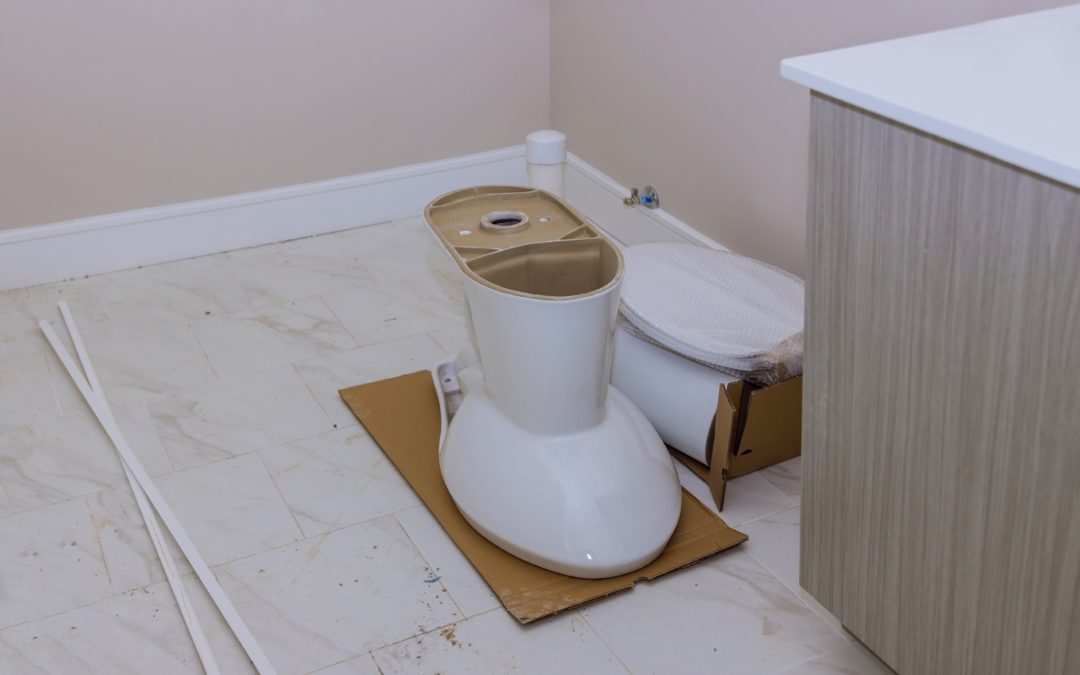How Your Toilet Stays Connected to Your Drain and Floor
Your toilet flange, also known as a closet flange, is an essential pipe fitting located where your toilet and floor meet.
This ring shaped fitting is used to connect your drain pipe to the inside of your toilet. It also aids in attaching your toilet to the floor.
Your flange can come in a variety of materials and sizes.
They are an important addition to your toilet construction. Your flange is bound using a wax ring which seals the fitting and keeps any water or smells from leaking out of your toilet and pipes.
What are Water Closet Flanges Made Of?
There are four kinds of toilet flanges. You likely either have a plastic, cast iron, brass or specialty flange.
Plastic flanges are made of a heavy-duty material such as Polyvinyl chloride (PVC) or Acrylonitrile butadiene styrene (ABS). These are great for replacing an old flange or working with a variety of pipe types.
A specialty flange could be made of one of the other materials but is often curved at an angle for spaces where a full length flange will not fit well.
If you choose a cast iron flange, it can be paired with pipes made of plastic or cast iron.
Brass flanges are best for older homes that use a lead bend in their pipes.
For most DIYers, their choice of flange is PVC or ABS. However, if you are not sure what kind of flange you need it’s best to ask a professional and have a plumber help you out.
Who Makes Toilet Flanges?
You can find your flanges at any home improvement store like Home Depot or Lowes. They also can be purchased through plumbing-specific suppliers such as Ferguson.
One of the most commonly found brands of flanges is Oatey. Some other brands include:
How Do You Install a New Closet Flange?
If you’re starting to suspect water is leaking from the bottom of your toilet and into the subfloor, it might be time for a flange replacement.
If your current flange has come loose or is falling apart, it can cause significant water damage.
Before you get started with your flange replacement you’ll need to gather:
- cleaning supplies
- adjustable wrench
- screwdriver
- Plunger
- disposable putty scraper
Your replacement will require a brand new flange, new nuts and bolts and a thick wax ring.
There are several steps to a DIY flange replacement, they are as follows:
- Empty all of the water from the toilet by turning off the valve then flushing and plunging. You can use a sponge or rag to wipe up any remaining liquid from inside your tank.
- Remove the bolts keeping your toilet tank connected, lift it off and place it out of the way.
- Remove the base of your toilet by taking off the bolt caps, loosening the nuts and removing the bolts. If your toilet is attached to the floor with caulk, cut all the way around the base and then tilt slowly to break the seal and remove the toilet.
- Place the toilet on its side and you will see the hole at the bottom surrounded by the wax seal. Scrape all of the wax off with your disposable tool.
- Your old flange should be bolted to the floor. Loosen any bolts and lift the flange away from the floor.
- Shove rags in the hole to prevent sewer gasses from coming in and fully clean the area where the flange was.
- Take out the rags and install the new flange using the hardware provided with your flange. If your flange doesn’t include new hardware, make sure you purchase bolts compatible with your floor type such as wood or cement screws.
- Place the rubber lip and new extra thick wax ring on the flange.
- Align your toilet with the flange bolts and set it into place by using a rocking pressure to smush the wax seal.
- Reattach your toilet to the floor by tightening the nuts onto the bolts at the base and replacing the bolt caps.
- Pour a gallon or small bucket of water into the toilet to check the seal.
- If there is no leakage, reconnect the tank and the water line.
- Slowly turn the supply valve back on.
- Flush your toilet to check that everything works again and is connected properly.
Do You Need Help With Your Toilet Flange?
If you don’t feel like you have the time, patience, physical ability or expertise to replace your toilet flange there is no reason to worry. If you’re flooded with too much work, try calling Mike Wilson Plumbing for help.
Your toilet is a much needed part of your home, so you should never risk ruining your plumbing.
Mike Wilson Plumbing helps homes and businesses with all kinds of toilet repairs across Richmond and Chesterfield, Virginia. Give us a call for flange replacements and other plumbing improvements today.

